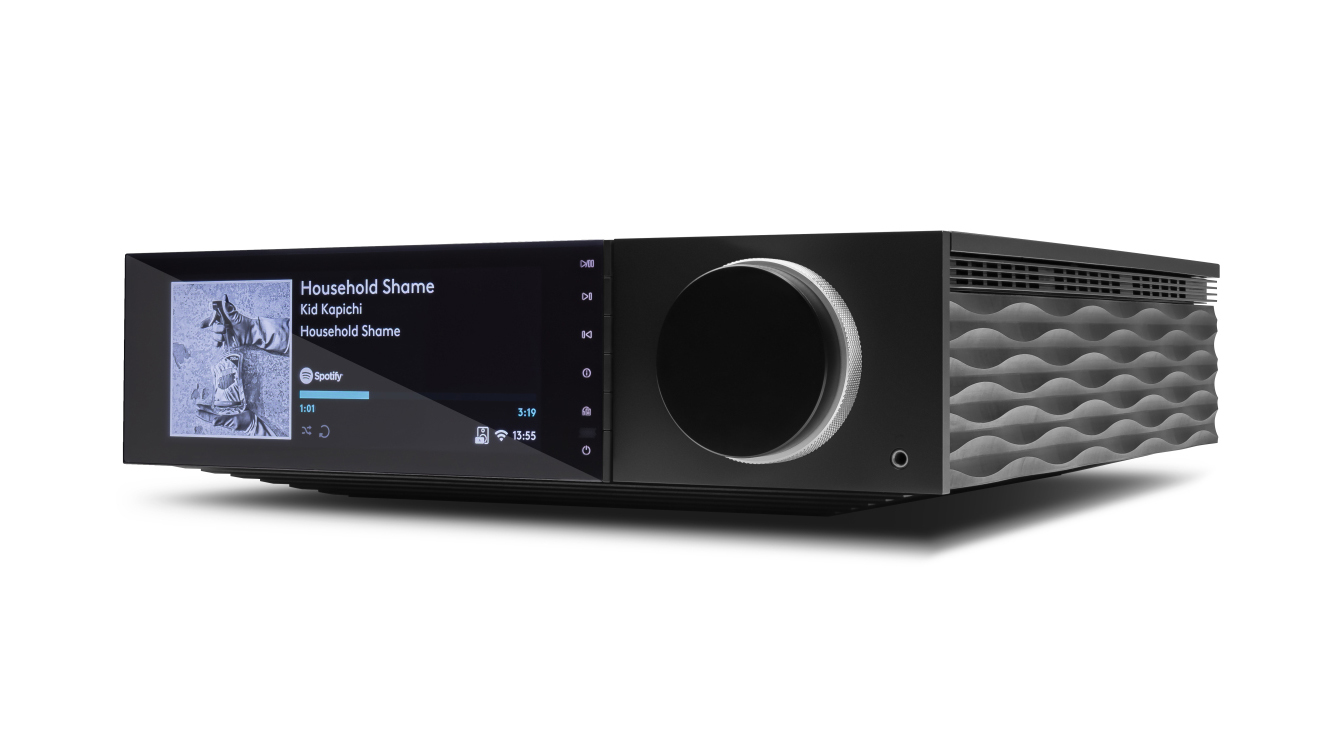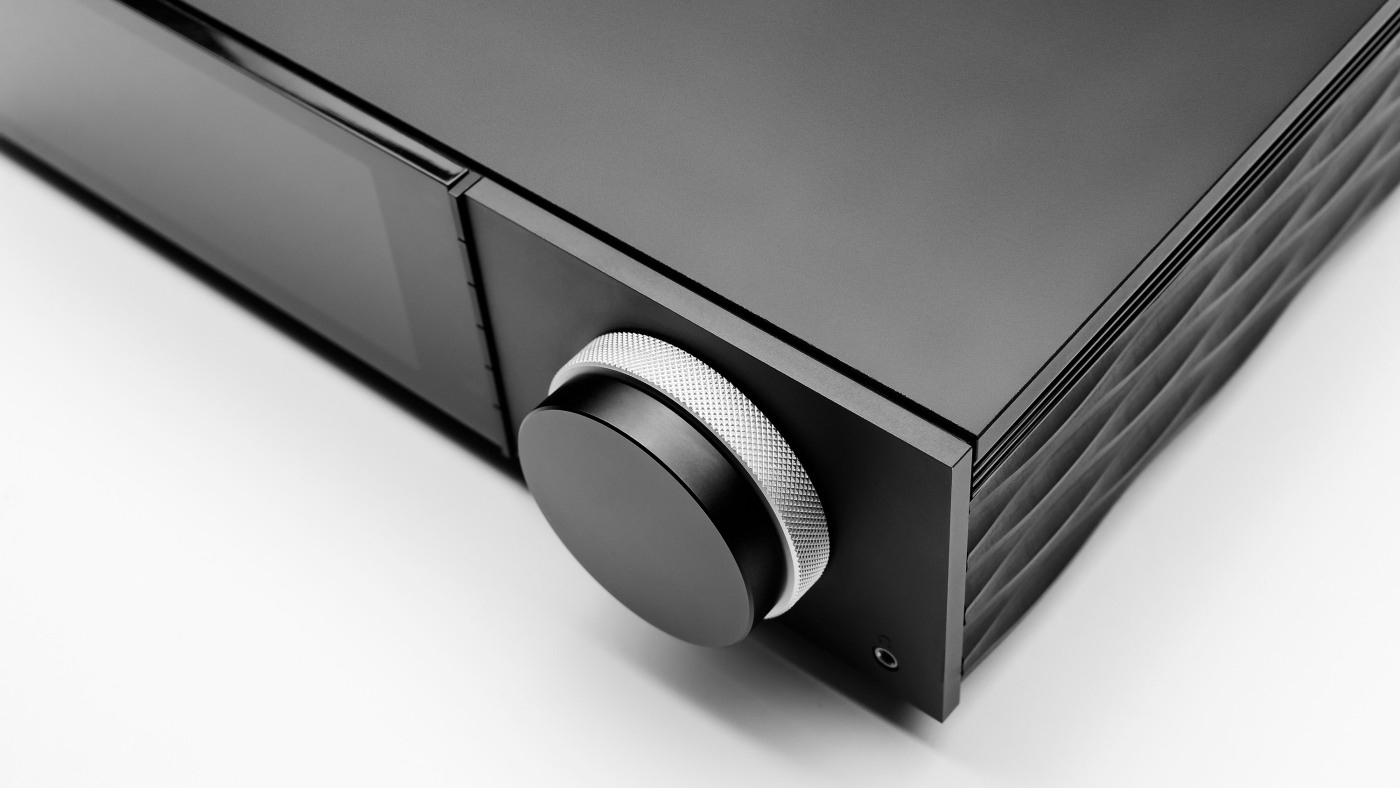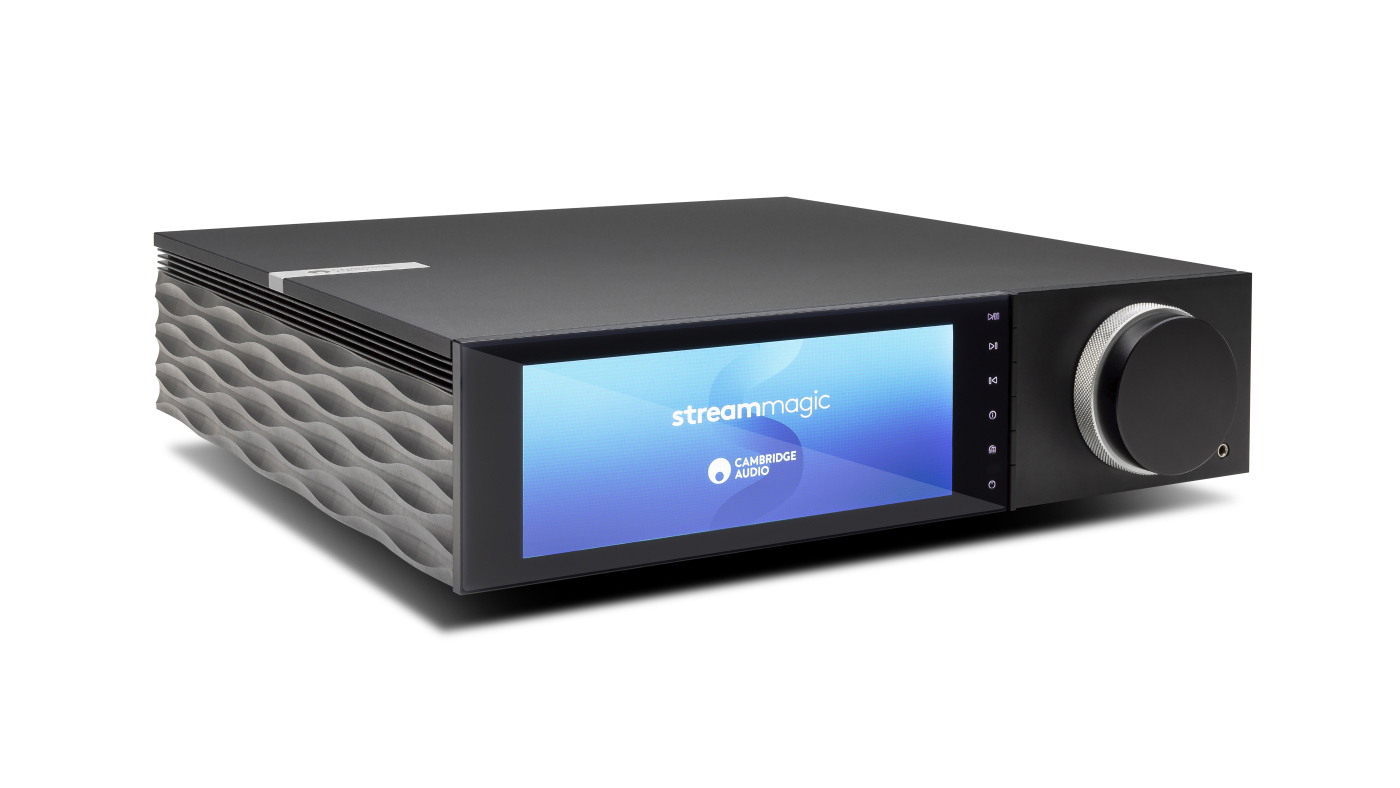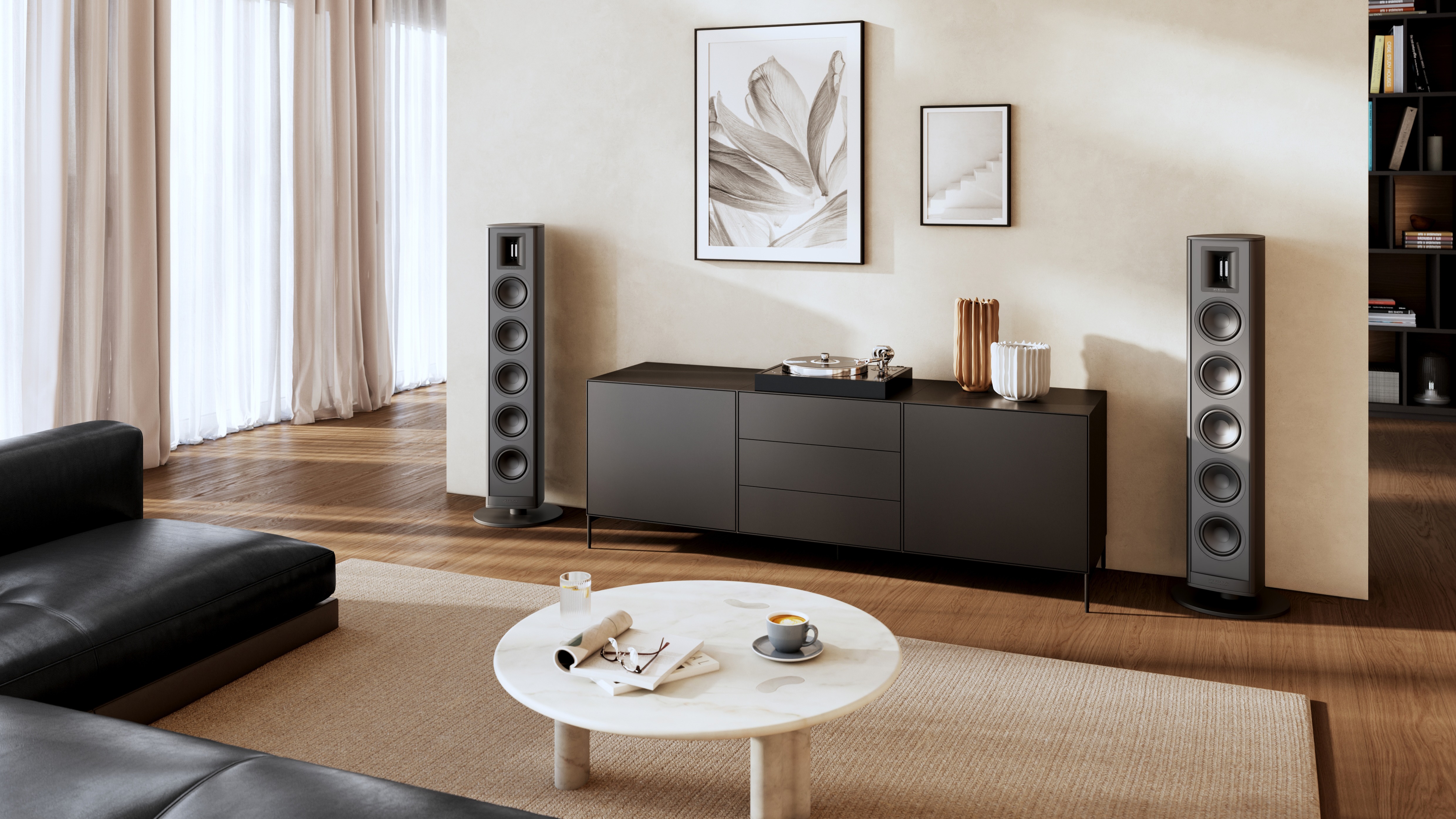What Hi-Fi? Verdict
Cambridge’s flagship streaming system is like an all-inclusive five-star holiday – pricey but worth it
Pros
- +
Beautifully open and articulate
- +
Exhaustively featured
- +
Pleasant to use
Cons
- -
Up against some tough competition
Why you can trust What Hi-Fi?
If there’s one thing that architect Ludwig Mies van der Rohe’s ‘less is more’ dictum is hard to apply to in hi-fi, it’s today’s streaming systems. After all, they are expected to embrace every source, service and relevant technology available. Thankfully, it's a school of thought that Cambridge Audio's flagship just-add-speakers system, the Evo 150, subscribes to.
Features

Anyone unboxing their Evo 150 may not be in a hurry to avert their eyes from the box’s colourful display and eye-grabbing side panels, but they’ll soon notice that the rear panel is absolutely jam-packed with sockets – not bad considering network streaming is the prime focus of this kind of product. While systems such as these often offer a few inputs to serve physical formats, Cambridge has gone the extra mile to be as inclusive as possible.

Outputs 3.5mm, preamp, sub
Inputs phono, coaxial, optical, RCA, USB, HDMI ARC
Max power 150W per channel
Bluetooth aptX HD
AirPlay 2 Yes
Google Chromecast Yes
MQA Yes
Dimensions (hwd) 9 x 32 x 35cm
The Evo 150 does what older siblings do best: strive to always go one better. While the entry-level Evo 75 packs line-level RCA, USB, coaxial, optical and HDMI ARC connections, its pricier brother expands on that with phono (MM), asynchronous USB and balanced XLR inputs, a second optical input, plus two sets of speaker terminals for running two pairs simultaneously. In other words, there’s little you can't plug into the Evo 150.
The built-in phono stage makes it the Evo of choice for vinyl junkies, and because of its higher output (150W per channel compared to 75) and superior ESS Sabre DAC chip, arguably it’s also the pick for anyone with demanding speakers, a second pair in a nearby room, or a laptop full of music they wish to hook up.
Not that you’d necessarily make full use of that busy rear panel; the Cambridge is well equipped as a solo operator. The company’s built-in StreamMagic platform, which comes with its StreamMagic control app, hosts Tidal, Qobuz and any network-stored music drives (via DLNA). And that’s just the tip of the Evo 150’s built-in streaming offering.
Google Chromecast support provides easy streaming of Deezer, YouTube Music and TuneIn Radio, while AirPlay 2 allows one-touch casting from Apple devices. Spotify Connect and Tidal Connect (the latter is complete with MQA support for playing hi-res Tidal Masters) are also onboard, as is aptX HD Bluetooth for ‘offline’ wireless playback. Predominant users of such streaming platforms, or subscribers to music management platform Roon, may not have much use for the Evo 150’s companion app, but it’s still worth downloading to allocate presets, which offer an easy way to access, say, a particular playlist or internet radio station. There are also other settings you might want to delve into, such as basic EQ adjustment.
Build

The premium streaming system market is on the rise, and at the time of writing the Evo 150 (and its sibling) would run away with ‘best dressed’ in the category. Realising that this product has, by nature, a greater lifestyle appeal than its specialist catalogue of hi-fi separates, Cambridge has produced a box that any interior designer would be happy to work around.
The latest hi-fi, home cinema and tech news, reviews, buying advice and deals, direct to your inbox.
The front of the sturdily built, black anodised aluminium cabinet is tastefully adorned with a 6.8in full-colour screen – great for displaying album artwork and playback info, and helpful for any manual source switching or library browsing – and a control dial for volume and scrolling. The side panels come in either a walnut wood or black rippled Richlite and are magnetically attached and swappable, presumably to appeal to those who are indecisive or like to regularly redecorate.
As with the Evo 75, we aren’t too fond of the thin ‘strip’ playback buttons that line one side of the display – we’d prefer something that feels more positive in use or, better still, wider functionality within the rotary dial – but that’s the beginning and end of our complaints where physical design is concerned. The Evo 150 is a lovely bit of kit.
So, the Evo 150 should be seen, but should it be heard? Those who have spotted the five red stars at the top of this review will already know the answer, but, as is often the case, there’s more to consider in the context of the competition.
Sound

Having recently tested the Evo 75, we have certain assumptions of the Evo 150 and, sure enough, it throws no curveballs our way. The flagship Evo is also an articulate communicator – clear and detailed, punchy yet refined.
Massive Attack's Teardrop is an exceptional advert for the Cambridge’s talents: the broad, analogue crackle production is compellingly clear and effective through our reference ATC SCM50 speakers, while the initial dynamic build and pattern of the harpsichord come through with care and attention around that kick-beat. The Elizabeth Fraser vocal that floats over the top feels almost celestial. With everything going on, nothing feels like it’s hustling for room.
The Evo 150’s soundstage gains size and scale over its sibling, with a broader canvas on which dynamic peaks can bask in. There’s greater solidity to the way it presents itself, too, particularly through the lower registers. While the Evo 150 isn’t leaps and bounds ahead of the Evo 75 sonically, it is clearly a souped-up version – as it should be for its higher asking price.
The toughest task isn’t justifying itself against its sibling, though; the real test is how it stacks up against the benchmark at this level, the What Hi-Fi? Award-winning Naim Uniti Atom. We swap speaker cables and instantly miss the Cambridge’s breadth, depth and polish. The Naim is a comparatively cruder listen owing to its more confined soundstage and a more direct approach.
That’s only half the story, though, as the Naim counters with a greater sense of musicality. Mac Miller's 2009 thrives on an enticingly cool, continuous drum/cymbal loop, and the interplay there is tighter through the Naim, which, as our listening progresses, proves more adept in capturing the rhythmic fabric of a song.
While the Evo 150 offers a pleasantly wide window into his plainspoken rap, thanks to its midrange lucidity, the Naim is able to surface an extra layer of subtlety in his expression, too. Again, the Cambridge is more concerned with finesse, the string ensemble and piano melody delivered with a palatable fleshed-out smoothness.
Our testing naturally progresses from the network streaming to the Evo’s inputs and we remain impressed by just how much Cambridge has managed to cram into a box of this size. We’d stick with line-level when connecting audio sources if you can; not unexpectedly, the digital route does feel more compressed and lacking the same level of solidity and detail.
Grabbing our Focal Elegia and Grado SR325e, we don’t quite get the same spaciousness, clarity or refinement through the front-panel headphone output either, but it’s more than passable for occasional listening. That’s often the case in products of this type, and those who want more of a headphones listening experience could always add a dedicated headphone amp.
Verdict
Partnered with a pair of speakers, the Cambridge Audio Evo 150 is a capable and talented all-in-one system – one of the most exhaustively featured, best looking and highly intuitive examples of its kind. That’s complemented by a performance that, while not class-leading in every area, still makes a compelling case for choosing a simple system such as this over a set-up of separates.
The Evo 150 may not have spoken to van der Rohe and his minimal, "skin and bones" approach, but it will surely find fans in this convenience-led age.
SCORES
- Sound 5
- Features 5
- Build 5
MORE:
Read our guide to the best music streamers
Read our Naim Uniti Atom review
Read our Cambridge Audio Evo 75 review
What Hi-Fi?, founded in 1976, is the world's leading independent guide to buying and owning hi-fi and home entertainment products. Our comprehensive tests help you buy the very best for your money, with our advice sections giving you step-by-step information on how to get even more from your music and movies. Everything is tested by our dedicated team of in-house reviewers in our custom-built test rooms in London, Reading and Bath. Our coveted five-star rating and Awards are recognised all over the world as the ultimate seal of approval, so you can buy with absolute confidence.

